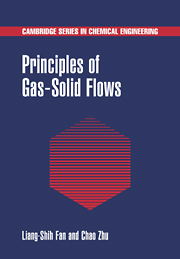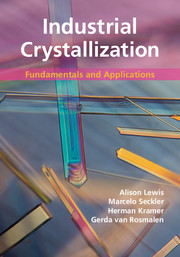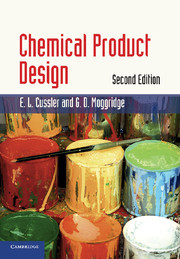Design and Processing of Particulate Products
Part of Cambridge Series in Chemical Engineering
- Author: Jim Litster, University of Sheffield
- Date Published: October 2016
- availability: In stock
- format: Hardback
- isbn: 9781107007376
Hardback
-
With this unique and comprehensive text, readers will gain the quantitative tools needed to engineer the particulate processes and products that are ubiquitous in modern life. Covering a series of particle and particulate delivery form design processes, with emphasis on design and operation to control particle attributes, and supported by many worked examples, it is essential reading for students and practitioners. Topics covered include a range of particle design processes such as crystallization and precipitation, granulation, grinding, aerosol processes and spray drying, as well as forms of delivery such as granules, tablets, dry powders, and aerosols. Readers will learn from real-world examples how the primary particle properties and the structure and properties of the delivery form can lead to high performance products, ranging from pharmaceuticals, consumer goods and foods, to specialty chemicals, paints, agricultural chemicals and minerals.
Read more- Unique in its broad coverage of particle formation and delivery form manufacturing processes
- Includes a range of real-world case studies, end-of-chapter problems and worked examples
- Develops the quantitative models and tools needed for analysing real processes and formulations
Awards
- Winner, 2017 Choice Outstanding Academic Title
Reviews & endorsements
'Jim has a clear and unique way of teaching that is both academically and industrially valuable. In this book, Jim has taken the next step in producing a textbook that provides both the background science and engineering required to work in this area and provides numerous practical examples of how the real-world engineer needs to work through practical everyday problems. In industry we are always looking for the bright new engineer who can step into a role of a practical problem solver, but how is that normally possible when a new engineer has no concept of what industrial particle processing is or practice in solving problems in this area? Jim's book is a great start in overviewing and teaching this broad field and providing great, concrete examples on how to solve the exact problems that the new and seasoned engineer will face. This book grasps the challenges of particle processing and engineering and teaches the reader to be a better engineer.' W. A. Hendrickson, President of IFPRI
See more reviews'… provides an excellent introduction to particulate manufacturing processes suitable for any engineer starting out in this area. In particular, I would strongly recommend this book if you are starting a research project in this area, as it will provide you with a solid foundation from which to progress in terms of your knowledge. 5 stars.' Christopher Hewitt, The Chemical Engineer
'This volume is a short and readable text on the subject of particulates and particulate delivery. Within the field of engineering, it takes an interdisciplinary approach to particulate characteristics, formation, and applications, with a focus on materials custom-designed for specific tasks. Furthermore, it addresses both process and product design approaches, encouraging students to think about designing particles for specific functions, while considering issues of efficiency in long-term and large-scale creation of the desired materials. Each chapter begins with a case study and then moves through short sections of learning goals, specific lessons, a summary, a bibliography, and problem sets illustrated sparingly with graphs, tables, and occasional images. Given the specialized nature of the text, its usefulness in a collection will be determined by the needs of the users. This volume will serve as an excellent reference book, as well as a strong textbook for a course on the subject.' CHOICE
Customer reviews
Not yet reviewed
Be the first to review
Review was not posted due to profanity
×Product details
- Date Published: October 2016
- format: Hardback
- isbn: 9781107007376
- length: 340 pages
- dimensions: 253 x 180 x 20 mm
- weight: 0.81kg
- contains: 157 b/w illus. 38 tables
- availability: In stock
Table of Contents
1. Introduction
2. Particle characterization and particle property distributions
3. The population balance
4. Crystallization and precipitation
5. Particle size reduction
6. Aerosol processes
7. Spray drying and spray cooling
8. Wet granulation
9. Strength, breakage and attrition of particulate delivery forms
10. Dispersion, disintegration and dissolution.
Sorry, this resource is locked
Please register or sign in to request access. If you are having problems accessing these resources please email [email protected]
Register Sign in» Proceed
You are now leaving the Cambridge University Press website. Your eBook purchase and download will be completed by our partner www.ebooks.com. Please see the permission section of the www.ebooks.com catalogue page for details of the print & copy limits on our eBooks.
Continue ×Are you sure you want to delete your account?
This cannot be undone.
Thank you for your feedback which will help us improve our service.
If you requested a response, we will make sure to get back to you shortly.
×




